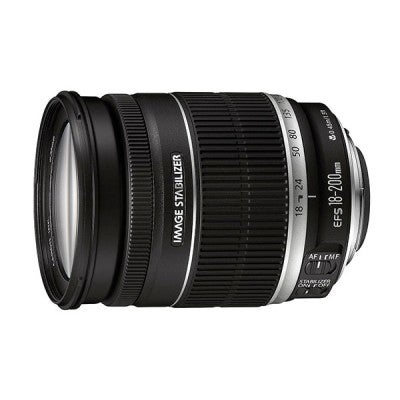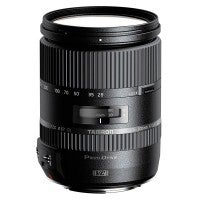Superzoom lenses provide the kind of optical flexibility normally reserved for compact cameras, covering the focal range of several lenses in one optic. Here are some of the best around
Superzoom lenses are a popular choice for many photographers, and often the first lens people invest in after growing out of typical kit options. They are typically defined by a moderate wide-angle start and a moderately long telephoto finish, differentiating them from standard zooms which end at a short telephoto length and tele-zooms which start and end entirely in the telephoto range. Because of this, they’re ideal for general-purpose use and popular options for holidays and travelling.
While even the best superzoom lenses offer the convenience of a particularly broad range of focal lengths in one package, they sadly can’t match the wide apertures and optical performance common to fixed-focal-length lenses and those with more restrained focal ranges. A lens which attempts so many things at once will clearly fall short in some areas when pit against those designed for specific purposes. Of course, performance varies from lens to lens, and most people will not scrutinise the kind of everyday snapshots for which they’re intended to the same extent as other images.
The strong interest in superzoom lenses has meant that manufacturers – particularly third parties such as Sigma and Tamron – have focused on developing these to be highly capable. Although it’s very difficult to design such optics with wide maximum apertures, many options – even cheaper ones – now include image stabilisation, which is clearly intended to stabilise images at longer focal lengths but also broadens their use in low light. Pricier lenses may include more low-dispersion, aspherical or highly refractive elements (or superior versions of these), together with weather sealing and more refined focusing systems.
Here is our pick of current superzoom lenses.
APS-C
Budget (up to £300)
Sigma 18-200mm f/3.5-6.3 DC Macro OS HSM (£249)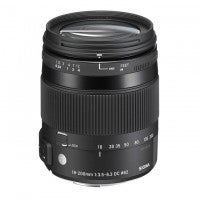
One of Sigma’s latest ‘Contemporary’ superzooms, and keenly priced when you consider the built-in Optical Stabilizer (in Canon, Nikon and Sigma fittings), this optic goes on to offer a Hyper Sonic Motor and a Zoom Lock function to prevent it creeping under its own weight. It’s also available for Pentax and Sony users without the Optical Stabiliser (as this is found in these brands’ bodies) and is compatible with the company’s USB Dock for general performance maintenance.
Sigma 18-250mm f/3.5-6.3 DC Macro OS HSM (£279)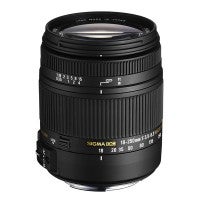
This lens may not be as recent as the version above, but it still delivers the combination of a Hyper Sonic Motor and Optical Stabilizer, together with an extra 50mm reach at the telephoto end, for only around £30 more. As with the above lens, it’s available in Canon, Nikon, Sigma, Pentax and Sony fittings, the latter two omitting the Optical Stabilizer.
Tamron 18-200mm f/3.5-6.3 Di II VC lens (£169)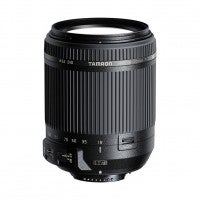
Surprisingly affordable for an image-stabilised lens, this Canon- and Nikon-compatible-optic goes on to offer a Zoom Lock function to stop the barrel from extending when not required, as well as a Low Dispersion elements combat chromatic aberration. There is also a Sony option that lacks Vibration Compensation.
Tamron 18-270mm f/3.5-6.3 Di II VC PZD (£269)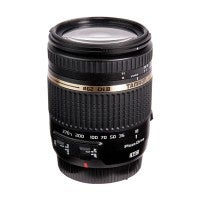
Available for Canon, Nikon and Sony fittings – the latter without Vibration Compensation – this lens benefits from a Piezo Drive motor and Vibration Compensation, with its focal length equating to 29-432mm on Canon bodies and 27-405mm on Nikon and Sony bodies.
Premium
Canon EF-S 18-200mm f/3.5-5.6 IS (£356)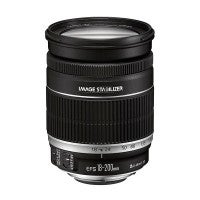
Offering an effective focal range of 29-320mm in 35mm terms, this compact lens from Canon features two aspherical elements and two Ultra Low Dispersion (UD) elements to keep aberrations low, as well as a four-stop Image Stabilizer that automatically senses and adjusts compensation when you’re panning or using a tripod.
Nikon 18-300mm f/3.5-6.3G ED VR AF-S DX (£549)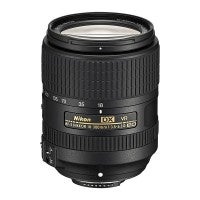
Covering a 27-450mm focal range on DX-format bodies, this optic is equipped with a four-stop Vibration Reduction system and deals with chromatic aberration through three ED elements. It’s maximum aperture at the telephoto end is a little narrow, but it’s also lighter than comparable models because of this.
Nikon AF-S DX 18-200mm f/3.5-5.6G ED VR II (£549)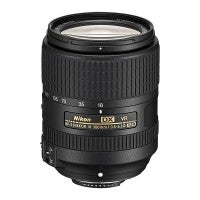
A more modest focal range than some other option here, but with a second-generation Vibration Reduction system to help stabilise images and videos, this Nikkor combines with DX-format bodies to deliver an effective focal range of 27-300mm in 35mm terms.
Pentax 18-270mm f/3.5-6.3 SMC DA SDM (£415)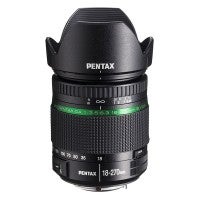
Designed for APS-C bodies but also compatible with the full-frame K-1 in its crop mode, this optic delivers an effective focal range of 27.5-414mm in 35mm terms on APS-C bodies. Two ED elements keep chromatic aberration low, while a Supersonic ‘SDM’ motor is on hand to keep autofocus swift and quiet.
Sigma 18-300mm f/3.5-6.3 C DC Macro OS HSM (£349)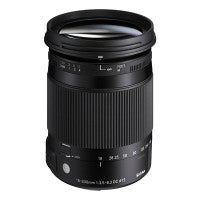
Together with its expansive focusing range, this optic benefits from a deep focusing ring and four FLD elements on the inside, whose performance is said to be equal to fluorite. The ‘Macro’ moniker means it can focus closer than some other lenses, although at a reproduction ratio of 1:3 be aware that this is still some way of an actual macro lens. It’s available in Canon, Nikon, Pentax, Sigma and Sony fittings.
Sony 18-250mm f/3.5-6.3 DT AF Lens (£439)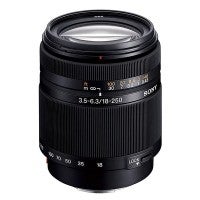
This compact lens provides an effective 27-375mm focal range on Sony’s APS-C SLT bodies, and sports a deep zoom ring and focused-distance markings on the barrel. On the inside, aspherical and extra-low dispersion optics are combined with conventional elements to keep aberrations to a minimum.
Tamron 16-300mm f/3.5-6.3 Di II VC PZD Macro (£399)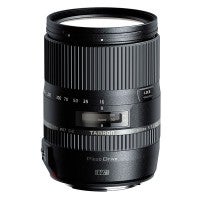
Weather resistance, a relatively wide start and a longer-than-usual finish splits this lens from its contemporaries, while Vibration Compensation helps to keep images sharp across the focal range. The further inclusion of a Piezo Drive Motor ensures autofocus is swift and quiet. Available in Canon and Nikon fittings, with a non-VC Sony version also available.
Full Frame
Budget (up to £400)
Tamron’s AF 28-300mm F/3.5-6.3 XR Di LD Aspherical [IF] Macro (£319)
One of the most affordable lenses of its kind for Canon, Nikon, Pentax and Sony full-frame users, but lacking Vibration Compensation, this lens is good for those on a budget who will mainly be shooting in fine lighting conditions. Note: this lens will not autofocus on Nikon DX bodies that lack their own AF motor, such as the D3300.
Premium
Tamron 28-300mm f/3.5-6.3 Di VC PZD (£499)
Similar in principle to the above lens, but with a more modern design and the useful addition of Vibration Compensation, together with a Piezo Drive Motor and a greater range of specific elements to counter aberrations. Available in Canon, Nikon and Sony fittings.
Canon EF 28-300mm f/3.5-5.6L IS USM (£1795)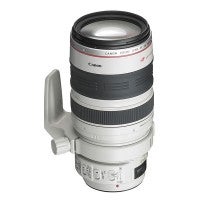
As an L-series lens this boasts a dust- and splash-proof construction and L-series optics, and while the maximum aperture is somewhat narrow for a lens of this price, the Image Stabiliser should help to use slower shutter speeds than would be otherwise possible.





